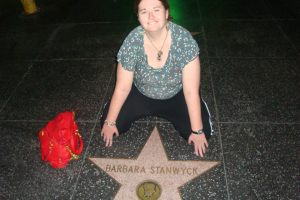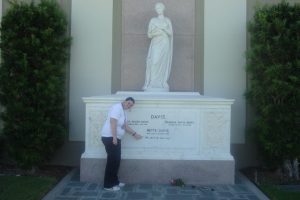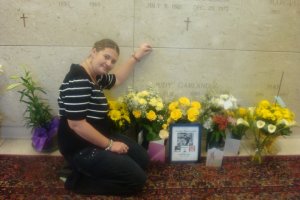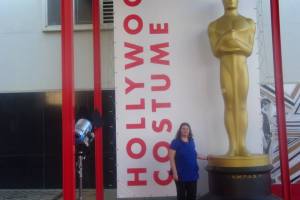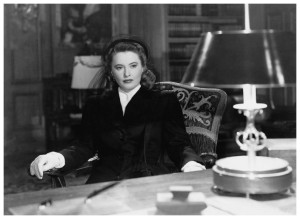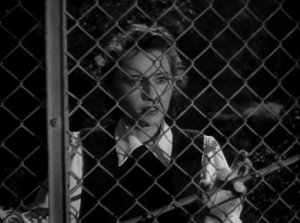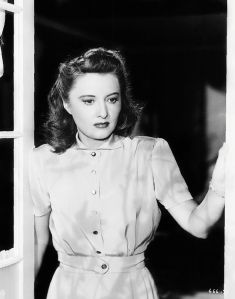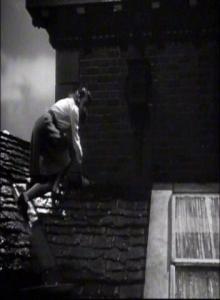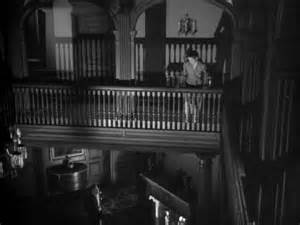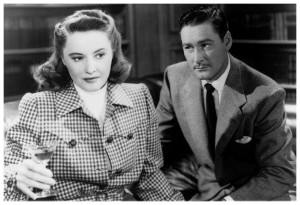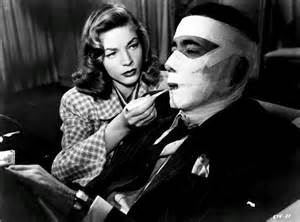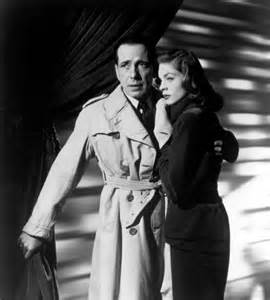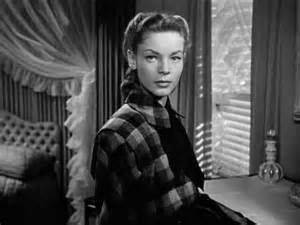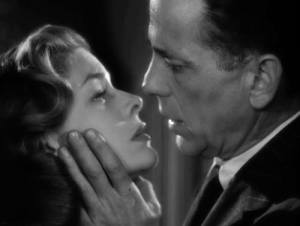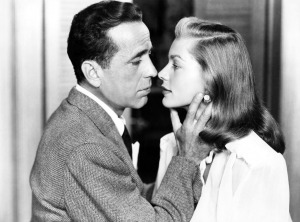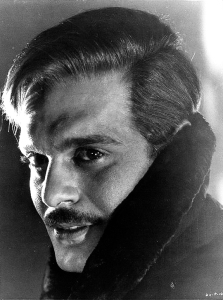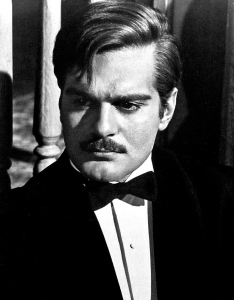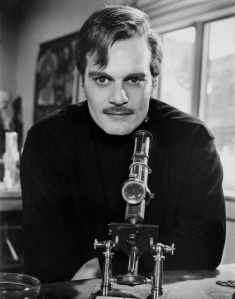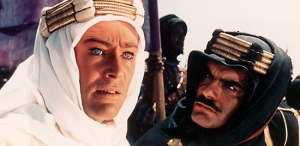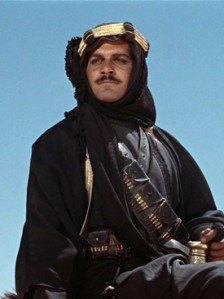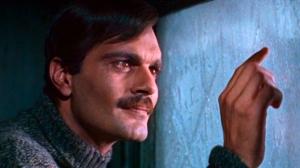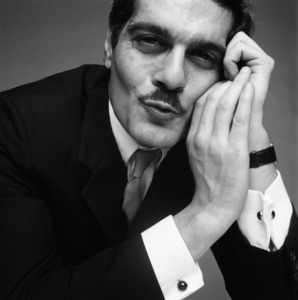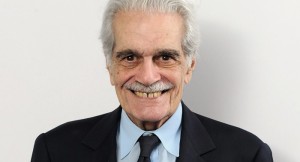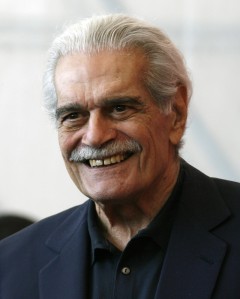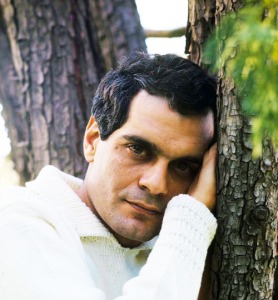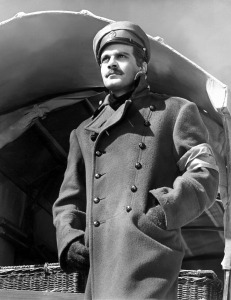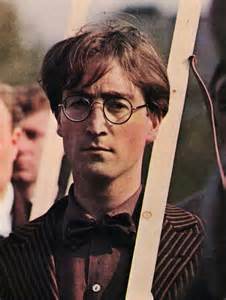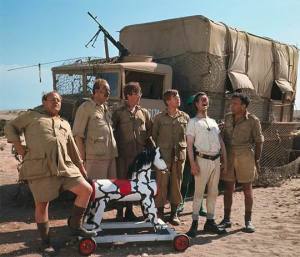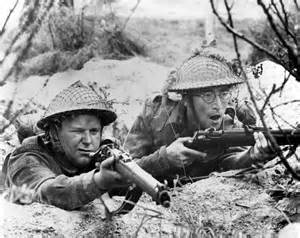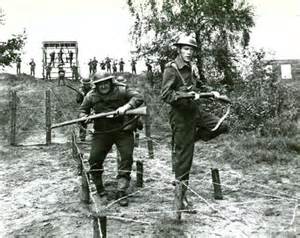In August, I was selected to be the guest for the month on the newly site feature “Be My Guest” for the entertainment website “All Good Things” founded by classic film enthusiast, Monty Hawes. During each stint, each chosen participant will answer the following questions that are related to classic film assigned to them. Below are my answers.
1. What made you start blogging?
A: For years I was interested in having my own website dedicated to classic cinema, but since I’ve been interacting with a lot of people on Facebook who maintain blogs focusing on old Hollywood, it really piqued an interest in me to create my own blog, though it took me a while to do so. I finally bit the bullet though when I made up my mind that I wanted to write a book, so I opened up my own blog. Sadly that blog wasn’t very successful, so I closed it down. When I closed it down however, I realized that it may have been a mistake, as a blog takes a lot to maintain, and I could have got more traffic if I gave it a better chance, but I went a while without a blog. It wasn’t until October last year, when I started working permanently for ‘All Good Things’, writing essays and reviews on classic films that I decided to open up a new blog. Luckily I did, as this blog has been very successful, and I have enjoyed being accepted into blogathons. Already, I have received a few awards for my blog, and I’m currently garnering acclaim for an article I wrote on Barbara Stanwyck’s film “Cry Wolf”, for the 1947 Blogathon. With all these blogathons that I’ve been participating in, it also made me interested in hosting my own blogathon, which I am doing in August, when my Barrymore blogathon takes place over Ethel Barrymore’s Birthday week.
2. Who are your favorite classic film stars? name as many as you want and a special emphasis on your #1
A: My absolute favorite actress of all time is Barbara Stanwyck. She is, and will always be my number 1. Not only was she a brilliant actress, she displayed the most versatility among other stars of the time, but sadly her indelible talents and inimitable performances were overlooked, as she never received a single Oscar, though she was nominated four times. In my opinion, she was robbed of several Academy Awards. I have never seen a bad Barbara Stanwyck movie. Every single movie of hers in enthralling. Here is part of my article describing Barbara that I wrote for “Cry Wolf” for the 1947 blogathon.
Barbara Stanwyck was the most versatile actress to ever grace the silver screen. During the annals of her career, she pioneered her way through an array of notable classics, showcasing her inimitable talents through a long series of diverse roles that spotlighted the versatility and in depth emotions she displayed in her range as an actress.
For decades she reigned as one of Hollywood’s most gifted assets, and that assumption is indeed correct. She had the most ability among her contemporaries to demonstrate such raw emotion without having to resort to using histrionics, and yet unlike the majority of her peers, she never received a single Oscar, though she was nominated four times, but sadly missing out on all occasions, which certainly is a robbery, considering that those pictures and a myriad of others on her voluminous resume of films were definitely worthy of an Academy Award.
Below are some of my favorite actresses:
- Barbara Stanwyck
- Carole Lombard
- Ethel Barrymore
- Katharine Hepburn
- Bette Davis
- Lauren Bacall
- Lillian Gish
- Ingrid Bergman
- Judy Garland
- Angela Lansbury
- Olivia de Havilland
- Greer Garson
Favorite Actors:
- John Barrymore
- Spencer Tracy
- Cary Grant
- Humphrey Bogart
- Clark Gable
- Lionel Barrymore
- George Brent
- James Mason
- Melvyn Douglas
- Claude Rains
- James Stewart
Of course there are many other actresses and actors that I like, but these are my top favorites.
3. What are some of your favorite films?
A: I have many favorite movies, but it is too hard to list them all, as the list could go on and on forever. Here are some of my favorites.
- The Spiral Staircase ( 1946 ) with Ethel Barrymore, George Brent and Dorothy McGuire.
- Bringing Up Baby ( 1938 ) with Katharine Hepburn and Cary Grant.
- Sorry Wrong Number ( 1948 ) with Barbara Stanwyck
- Dark Victory ( 1939 ) with Bette Davis
- Guess Who’s Coming To Dinner ( 1967 ) with Katharine Hepburn and Spencer Tracy
- My Man Godfrey ( 1936 ) with Carole Lombard and William Powell
- The Strange Love Of Martha Ivers ( 1946 ) with Barbara Stanwyck
- Gaslight ( 1944 ) with Ingrid Bergman and Angela Lansbury
- Dark Passage ( 1947 ) with Lauren Bacall and Humphrey Bogart
- Now Voyager ( 1942 ) with Bette Davis
- Twentieth Century ( 1934 ) with Carole Lombard and John Barrymore
- Broken Blossoms ( 1919 ) with Lillian Gish
- Woman Of The Year ( 1942 ) with Katharine Hepburn and Spencer Tracy
- All About Eve ( 1950 ) with Bette Davis
- No Man Of Her Own ( 1950 ) with Barbara Stanwyck
- Night Of The Hunter ( 1955 ) with Robert Mitchum and Lillian Gish
- A Star Is Born ( 1954 ) with Judy Garland and James Mason
- The Wizard Of Oz ( 1939 ) with Judy Garland
- No Man Of Her Own ( 1932 ) with Carole Lombard and Clark Gable
- Rebecca ( 1940 ) with Joan Fontaine and Laurence Olivier. Alfred Hitchcock directed.
- Midnight ( 1939 ) with John Barrymore and Claudette Colbert
- The Ghost And Mrs. Muir ( 1947 ) with Gene Tierney.
- The Farmer’s Daughter ( 1947 ) with Ethel Barrymore and Loretta Young
- The Heiress ( 1949 ) with Olivia de Havilland
- Christmas In Connecticut ( 1945 ) with Barbara Stanwyck
- Letter From An Unknown Woman ( 1948 ) with Joan Fontaine
- Written On The Wind ( 1956 ) with Lauren Bacall
- Stella Maris ( 1918 ) with Mary Pickford
- To Have And Have Not ( 1944 ) with Lauren Bacall and Humphrey Bogart
- Made For Each Other ( 1939 ) with Carole Lombard and James Stewart
- Valley Of Decision ( 1945 )
- Sunset Boulevard ( 1950 )
- Witness To Murder ( 1954 ) with Barbara Stanwyck
- Mrs. Miniver ( 1942 ) with Greer Garson and Walter Pidgeon
- Imitation Of Life ( 1934 ) with Claudette Colbert. I also love the 1959 remake to with Lana Turner, but I definitely favor the original more.
- An Affair To Remember ( 1957 ) with Cary Grant and Deborah Kerr.
- The African Queen ) 1951 ) with Katharine Hepburn and Humphrey Bogart
- Any Barbara Stanwyck movie. She has never appeared in a bad movie. If it’s Barbara, it will leave me enthralled for hours. Sometimes I don’t even come out of my room.
4. Describe your first classic movie experience…like where and when, how old were you, did you see it on TV or at the cinema?
A: I’ve seen old movies with my parents and grandparents when I was little, but I don’t remember anything about them. My earliest recollection of me being introduced to classic film is when I was in year 7, when the school did “The Wizard Of Oz” for the end of year graduation play. At the start of the year, the school announced that they were doing the play at the end of the year, so for the entire year, we watched “The Wizard Of Oz” three times a week and rehearsed for the play every single day. Through watching “The Wizard Of Oz”, I became fascinated by Dorothy, and I remember asking Mum, who Dorothy is, and she said that Judy Garland played Dorothy, and I wanted to know where Dorothy is now. I was upset when Mum said that Judy Garland died from a drug overdose, though at the time, Mum didn’t know it was prescription pills, so she automatically thought it was heavy drugs. I remember falling in love with Judy Garland straight away, and was eager to see more of her films, so we hired “Meet Me In St Louis” and several other of her notable movies. Once I got to High School, I brought a lot of her movies on DVD. It was around the same time, that I started to explore other stars from the golden age, and shortly after I remember watching a Katharine Hepburn movie with my Great Grandma in the back room during a trip back home to Sydney, and I immediately became intrigued by her presence on screen, and I asked my Great Grandma about her. She said that Katharine was still alive, but is very old now. I didn’t know how old at the time, but I looked her up, and was surprised that she was in her 90’s. A few years later, when I was in year 11 in 2003, the news came that Katharine had passed away at the age of 96. I was upset, and remember being late to school because of it. When I arrived at the school, I tried to make conversation with the teacher, so I said in a friendly voice “Katharine Hepburn died over night”. Not to my surprise, as the school always treated me like dirt, the teacher yelled at me, told me to shut up, and punished me with doing detention at recess, lunch and after school, though because I was innocent and never did anything wrong, I decided to walk out of school and go to the shops.
I know I’ve seen many old movies before my first experience with it in year 7, when I was 11 years old, but I was too young to remember the times before that, so the truth is, Judy Garland was my stepping stone into the world of classic cinema. She is my first love, and I will always be in debt to her. Now I will never watch anything but a classic film. Classics all the way for me. They don’t make them like they use to.
5. Describe the perfect way for you to watch a classic film?
A: I love snuggling in bed at night and watching a classic film, while drinking tea and eating sushi. I have my own kettle by my bedside, so I can easily turn the kettle on and keep pouring tea, while I’m being enthralled by the movie that’s on the screen. I also watch movies in the afternoon quite often, and that’s usually the time when Mum will sit down and watch it with me.
6. How many friends, family members or co-workers share your love of classic films?
A: Nobody in my family is as passionate or obsessed with classic film as I am, but they do love old movies, especially my Mum, Grandma, Great Grandma, and my Aunty Val, who I barely remember, as she died when I was still only young, but my Mum has always said that I take after her in many ways with my strong interest in classic cinema and writing. My Great Grandma, who I love and miss so very much loved staying up late watching classic films, which is exactly what I do, and she sometimes told me stories about the stars that she heard while she was growing up.
Back in 1979, my Mum and Grandma were fortunate enough to see Lauren Bacall interviewed live on stage on “The Mike Walsh Show” in Sydney, and they were even more lucky to attain front row seats, thanks to my Mum who pushed in front of the assembled crowd.
My Grandparents have always been huge fans of Barbara Stanwyck. It was actually them that made me delve into Barbara’s filmography, as unfortunately there was a time that all I had of Barbara Stanwyck was “Double Indemnity”, which I enjoyed, but I found it hard to look past Barbara’s blonde wig in the movie. For years they were encouraging me to look into Barbara, and two years ago, I finally did, when I ordered a Barbara box set online. I was immediately hooked and fell in love with her straight away and went on an online shopping spree ordering every single Barbara DVD that I could get my hands on. Discovering Barbara Stanwyck was one of the best things that has ever happened to me, as I can honestly say that she is my favorite actress of all time, and I will forever be in debt to my Grandparents, who are the masterminds behind me being a madly obsessed and fanatical Stanwyckian.
My Mum has always admired Bette Davis for as long as she can remember. She found herself intrigued by her often fighty attitude, and every time Bette’s name was mentioned, her ears would prick. My Mum still considers Bette to be one of her favorite actresses of all time, like me, but after introducing Mum to Barbara Stanwyck, she honestly says that Barbara is her favorite actress of all time. ( She takes after her daughter, haha )
Also, my Great Grand pop loved Fred Astaire and Ginger Rogers, and I remember him telling me all about them. With all that, it’s only natural that I have inherited my families interest in classic cinema.
7. What is your favorite decade: the 20’s, 30’s, 40’s, 50’s or 60’s?
A: My absolute favorite decade is the 30’s, as that was the period when screwball comedies reached it’s pinnacle, and some of the greatest movies were made during that decade. I also love the 40’s, because I adore Film Noir, and many meritorious vehicles were released then.
8. What classic films have you yet to see but really want to?
A: I would love to see Ethel Barrymore’s silent films, but sadly they are now lost. I really hope that reels can be found and released on DVD. I would also like to see “Kind Lady”, starring Ethel Barrymore and Angela Lansbury. I’ve been looking everywhere for it, but unfortunately it’s not available anywhere. Of course there are many other films that I’m dying to see.
9. What is your favorite genre?
A: I enjoy many different genres, but my favorite genres would be, Film Noir, Thriller and Screwball Comedies, and I mean as in Screwball, which is intelligent comedy. I’m not really into all that silly slapstick comedy stuff. The Noir films have superb cinematography, and dark shadows that I find captivating. I also have a guilty pleasure for the tearjerkers. I don’t know why, but I love them. I guess that sometimes I just need a good cry.
10. If you threw a movie themed party, describe how you would do it?
A: I haven’t really thrown any movie themed parties, as there is nobody here to invite to it, but sometimes my good friend Richard, who is the director of the International Judy Garland Club hosts a Judy party at his house on June 10th, which is Judy’s Birthday. I also hold a mini party of my own on the Birthdays of my favorite actresses, where I will celebrate by drinking wine, or their favorite alcoholic beverage, while watching their films and eating a tasty snack.
11. What are some films that are widely praised that you couldn’t care less about?
A: I’ve seen so many enthralling classic films in my life, but I’ve also seen some that just don’t seem to interest me. Here are some.
- The Women ( 1939 ). I know many people consider it to be among their favorite movies, but I’ve never been able to understand why it is so popular. To me, it’s just a stupid film filled with a lot of nonsense.
- His Girl Friday ( 1940 ). I know this is your favorite Monty, and it’s another movie that many people love, though for some reason I’ve never liked it. I did however give it a second chance to see if I could adjust my opinion of it, but the end result proved the same. It just didn’t hold my interest.
- Lawrence Of Arabia ( 1962 ).
- Most of Joan Crawford’s later day films. They are nothing but B grade flops, that are filmed on a stingy budget. When I was a Joan Crawford fan, I found it hard watching a star of her status having to resort to those type roles at the end of her career.
- The Paradine Case ( 1947 )
- Gentleman’s Agreement ( 1947 )
12. What are some of your favorite film characters?
A: It’s hard to list all of them, but here are a few. I also like a lot of villains, so don’t judge me.
- Katharine Hepburn as Susan Vance in “Bringing Up Baby” ( 1938 )
- Cary Grant as David Huxley in “Bringing Up Baby” ( 1938 )
- Ethel Barrymore as Mrs. Warren in “The Spiral Staircase” ( 1946 )
- Barbara Stanwyck as Elizabeth Lane in “Christmas In Connecticut” ( 1945 )
- Bette Davis as Judith Traherne in “Dark Victory” ( 1939 )
- Carole Lombard as Lily Garland in “Twentieth Century” ( 1934 )
- Bette Davis as Margo Channing in “All About Eve” ( 1950 )
- Barbara Stanwyck as Sandra Marshall in “Cry Wolf” ( 1947 )
- Barbara Stanwyck as Martha Ivers in “The Strange Love Of Martha Ivers ( 1946 ). I know Martha is a villain, but I love her in this.
- Bette Davis as Stanley Timberlake in “In This Our Life” ( 1942 ). Stanley is all full of spice.
- Bette Davis as Charlotte Vale in “Now Voyager” ( 1942 )
- Carole Lombard as Anne Lee in “Vigil In The Night” ( 1940 )
13. Name some classic film stars that you don’t care for?
- Doris Day. I use to like her, but she’s never been one of my favorites. Now I can’t stand her.
- June Allyson
- Joan Crawford. This will shock many people, but after several altercations, and a very personal reason that I don’t want to share, I’ve lost all respect for Joan Crawford.
- Rosalind Russell
- Marilyn Monroe
- Jane Russell
- Jack Palance
- Gig Young
- Virginia Weidler
- Marion Davies
- Most stars of today’s generation, minus Kate Winslet and Drew Barrymore, who I both admire, though this is only classic stars.
- Ann Blyth
- Diane Baker
14. How many movies do you own?
A: That is a very hard question. My bedroom is a classic movie DVD shop, that is still growing. I own so many movies, that it is impossible to count. I would have to say that I definitely have way over 2,000.
15. Regarding film/TV, what would be your dream job?
A: Well at the moment I’m in the midst of planning for a proposed biography. I haven’t started the research phrase as yet, but I will be soon. I love writing, and I would like a job writing about classic films and stars. I would also like to be a film historian.
16. How many fellow classic movie lovers have you actually met in person?
A: When I traveled to New york in 2011 for “Judy In New York”, I met a lot of Judy fans as well as classic film fanatics during that event. Some of these people are high up, and luckily I keep in touch with them over Facebook. I also met some of them for the second time during a trip to Los Angeles late last year. Also in Los Angeles, I met Vincent Paterno, who is the founder of the notable blog “Carole And Co”. All that is not including classic film enthusiasts that I’ve met over here, and I’m planning to meet some more at the end of the year.
17. Have you been to any type of film festivals and or met any classic stars? or visited any famous film sites or landmarks?
A: I’ve actually been very lucky classic film wise. In 2011, I traveled to New York alone, and this was my first time over seas to attend a Judy Garland event called “Judy In New York”.
- During the event we visited all Judy sites in New York, including, Carnegie Hall, where she gave her legendary concert on April 23rd, 1961. We were there right in the very same theatre on the 50th anniversary.
- The Palace on Broadway
- Ferncliff Cemetery, visiting Judy and Joan Crawford’s crypts.
- Many more famous sites in New York
- Bette Davis’s grave at Forest Lawn
- Grauman’s Chinese Theater.
- Hollywood Walk Of Fame
- The Dakota Building ( Residence of Lauren Bacall and John Lennon )
- Movie star homes.
In the way of other classic film related things. I’ve seen Angela Lansbury live on stage in “Driving Miss Daisy”, and I was fortunate enough to meet her twice, have my photo taken with her, and attain a few autographs. I’ve also met Petula Clark twice after her concerts. Got photos taken and attained autographs. I did see Liza Minnelli in concert, and I was so close to meeting her, but that didn’t come to fruition.
As for other film related things, I’ve seen a few classic films on the big screen at the cinema, the last occasion being last night, when I went with Mum to the premiere of “Ingrid Bergman, In Her Own Words” at Luna Palace. I’ve also seen Barbara Stanwyck in “Double Indemnity” at my favorite art deco old movie house in May. I’ve seen several Judy movies at the cinema, including, “The Wizard Of Oz” about 3 times, “Meet Me In St Louis” and “For Me And My Gal”. I’ve also seen “Maytime” on the big screen a few years ago, and I’ve seen “Mildred Pierce” on the big screen at Bondi. In August, I’m seeing Greer Garson in “Goodbye Mr. Chips” at my favorite art deco old movie house.
Oh, I almost forgot to mention. In LA last year, I seen the Hollywood Costume Exhibit, where I had the chance to view some famous gowns and clothing worn by classic stars in the movies. My favorite costume of the day was Carole Lombard’s beautiful shimming gold gown in “My Man Godfrey”. Judy Garland’s Dorothy gingham dress and Ruby Slippers were there as well as many others.
I can also mention here that I walked right past Kate Winslet in the street in New York. It was outside the kids school. We were so close that we almost bumped into each other. I almost met her, in fact I thought I was, but sadly she was engaged in a telephone conversation the first time, and coming out of the school, she was with the school principal, who was complaining to her, and she was upset, on the verge of tears.
18. What classic films have you seen the most times?
A: I’ve seen all of my favorites about ten million times, so I can’t really say. I watch them over and over again and never tire to get sick of them. If I had to say one film, I would have to say “The Wizard Of Oz”. I’ve been watching it since I was a kid. Though many of my other favorites will be way up there too.
19. Who are some of your film crushes? that make your heart go aflutter?
- John Barrymore
- Clark Gable
- Humphrey Bogart
- George Brent
- Rock Hudson
- Elvis
- Robert Taylor
- Melvyn Douglas
- Rudolph Valentino ( My Great Grandma loved him too )
20. What film memorabilia do you own?
A: I’m actually very lucky memorabilia wise too. I am the proud owner of Lauren Bacall’s autographs. I wrote to her home address a few times, and she replied back to me twice, signing and personalizing every single photo I sent her, and there were literally heaps. She was very generous with me. In fact she went out of her way. As for other autographs, I’ve got a few autographs from Angela Lansbury and Petula Clark, who I’ve both met.
- I own a script that use to belong to Bette Davis
- Two giant Barbara Stanwyck posters that are proudly displayed on my bedroom wall, and other classic film star posters.
- Albums full of classic film star photos.
- Barbara Stanwyck watch
- Katharine Hepburn tea cup
- Joan Crawford doll
- Carole Lombard necklace. Sterling silver
- Barbara Stanwyck drinking flask.
- Many biographies and autobiographies.
- My millions of DVDs
- Beautiful framed photo of Ethel and John Barrymore and Barbara Stanwyck etc.
- Many many more film related items.
21. If you could have visited the set of one classic movie while it was being made, which film would you choose?
A: It’s hard to choose just one, because I would have loved to have been present on the set of an array of different movies. If I had to say one, I would probably say “Bringing Up Baby”. In my opinion, that is the funniest film, and I reckon that they would have shared many laughs during the production.
22. What is your favorite TV Show?
A: The Barbara Stanwyck Show ( 1960 – 1961 ). I own the complete series on DVD. This is not your average television show either, each episode brings an entirely different story and different genre, including suspense, mystery, drama, western, and many others.
23. Who are your favorite character actors?
A: Sadly the character actors are underrated and largely forgotten about today. In a lot of cases, it was the supporting cast that gave that little extra spark to the movie. Here are some of my favorites.
- Ethel Barrymore
- Spring Byington
- Charles Coburn
- S.Z Cuddles Sakall
24. What is your favorite Alfred Hitchcock movie?
A: I love Alfred Hitchcock, and I’m a big fan of a lot of his movies, but my favorites are:
- Rebecca ( 1940 )
- North By Northwest ( 1959 )
- Psycho ( 1960 )
25. Who is your favorite singer?
A: Judy Garland ( The greatest entertainer of all time ). I also like Nat King Cole, Petula Clark, Mario Lanza and many more.
26. If you had to invite five stars to a dinner party, dead or alive, who would you invite?
A: I wish. Barbara Stanwyck, Katharine Hepburn, Bette Davis, Ethel Barrymore and John Barrymore. I would love to have others over too, but just with five, I think I would go with the above list.
Thank you Monty for inviting me to be your guest. I’m honored to be able to talk about my passion for classic film, and I hope that the younger generation of today will take my advice and discover the world of classic cinama ( The time when movies were movies ) and not rubbish, like today. Once again, thank you. It’s been a pleasure.



